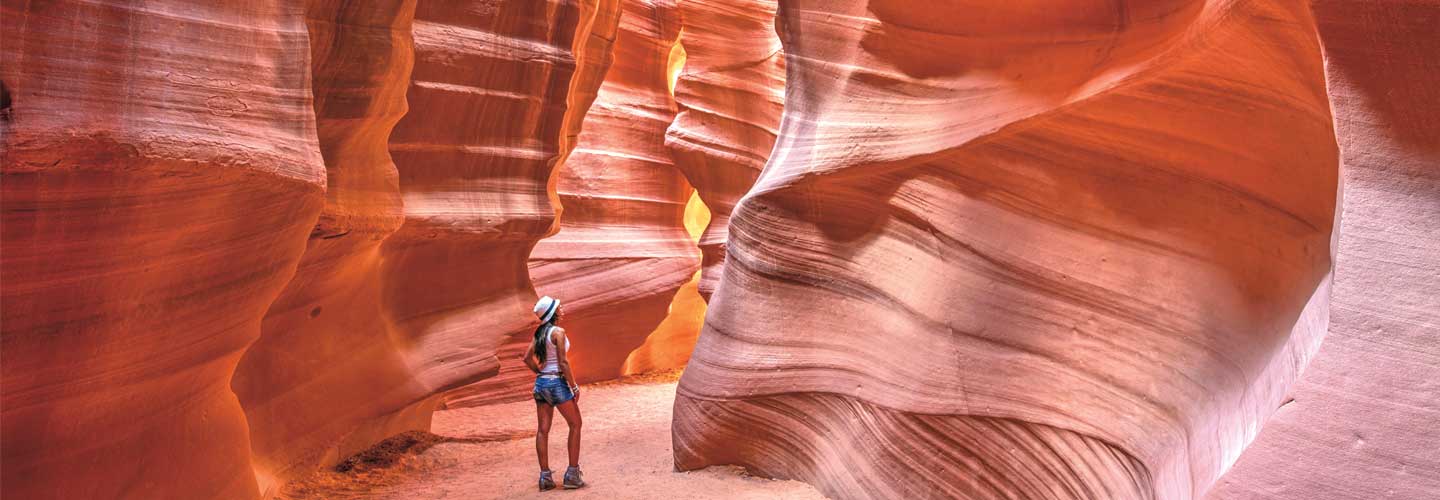Jim McMahon/Mapman®
How would you like to take a selfie here?
Antelope Canyon is a very “Wow!” sort of place. It is a slot canyon—one with narrow openings that were formed by flash floods over millions of years. The water carved stunning twists and turns through the towering sandstone. When sunlight streams in, the rippled stone’s deep red and orange colors almost glow—the perfect backdrop for a quick pic.
Getting to this photogenic spot isn’t easy though. It’s located in a desert on Navajo Nation land, and parts of it are deep underground. The landmark is about a 4.5-hour drive from Phoenix, Arizona, or Las Vegas, Nevada—the two nearest large cities. And the only way to access the slot canyon is by scoring a spot on a Navajo-led tour.
That hasn’t stopped crowds from coming. Ever since photos of Antelope Canyon went viral about 15 years ago, some 4 million people a year have descended on the remote area.
Visitors pay up to $90 each to be led through the canyon. Gritty sand blows everywhere. And there are no restrooms, trash cans, or breaks from the jostling crowd. But if tourists are in the right spot at the right time—just as the sun strikes those curving walls—who knows? They might get the Antelope Canyon photo of a lifetime.

